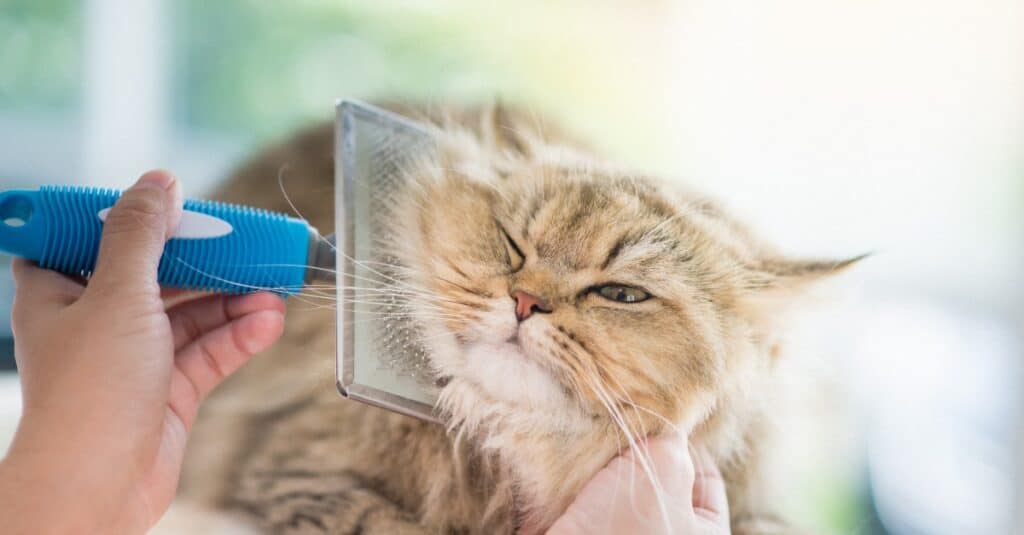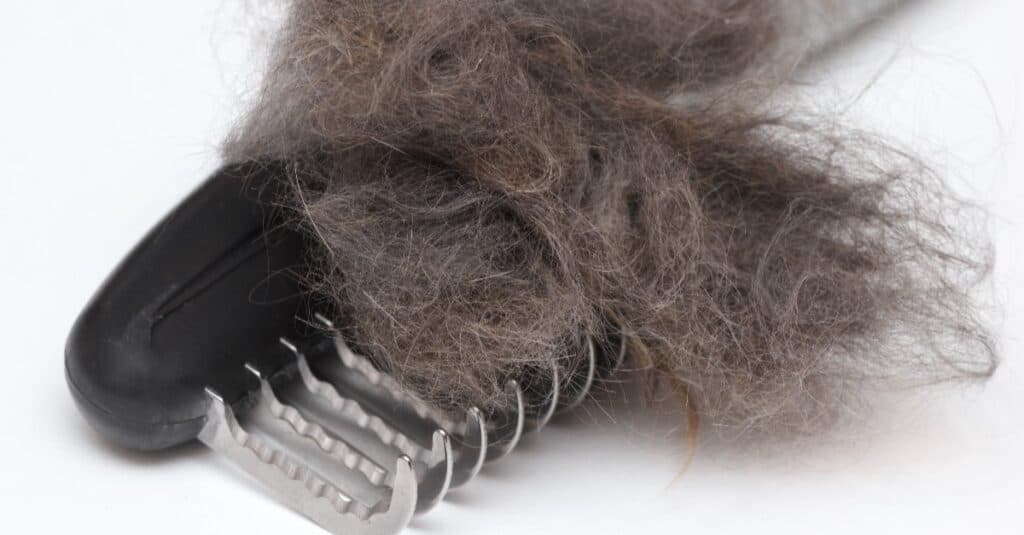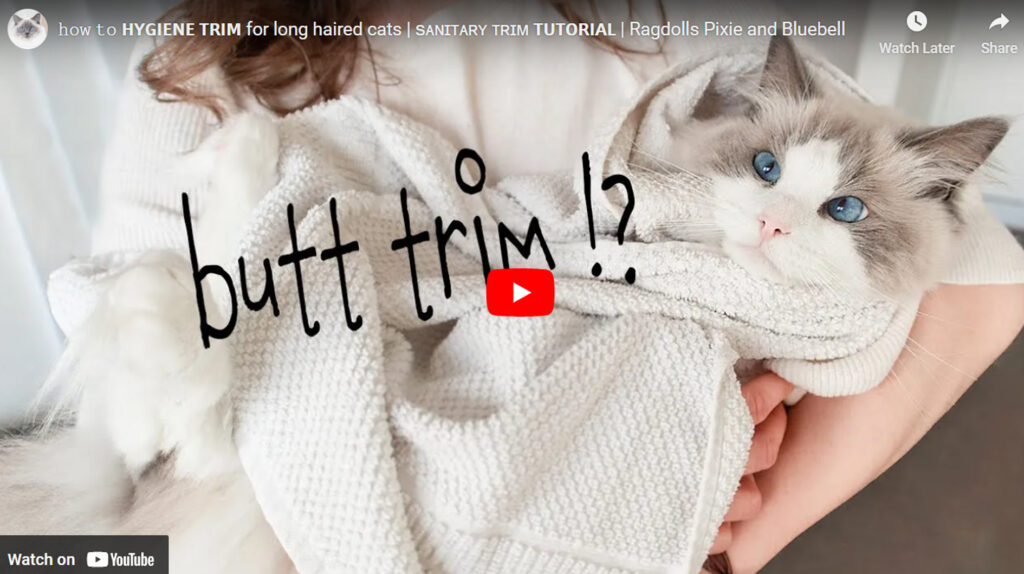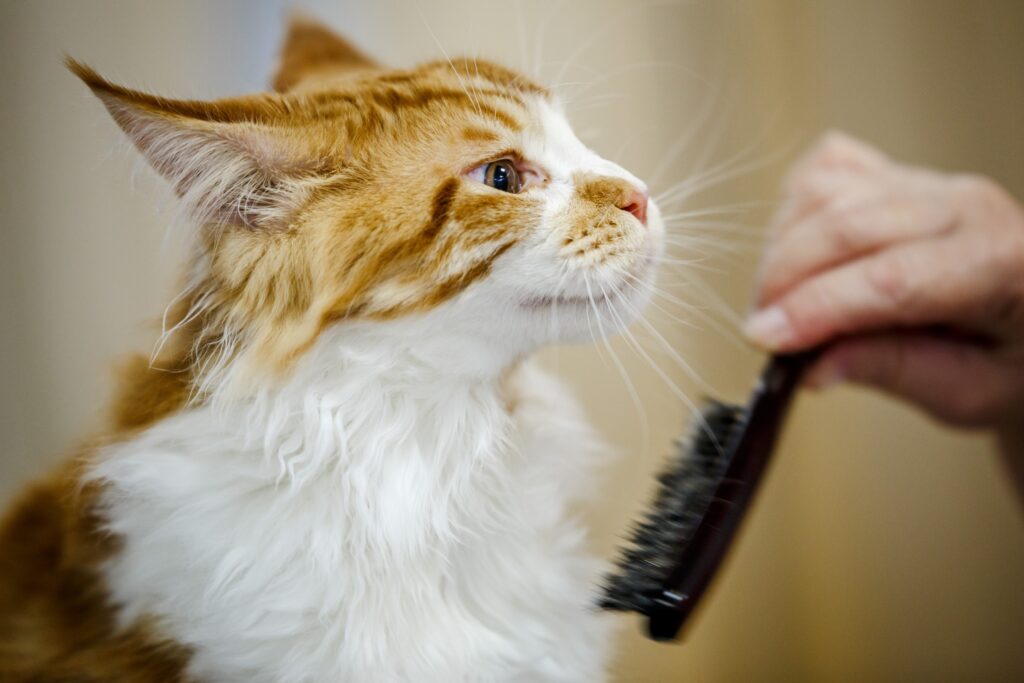Long-haired cats undoubtedly captivate with their luxurious coats and irresistible charm. Yet, behind their beauty lies a need for dedicated care and maintenance.
But fear not! With the right grooming regimen, you can ensure your long-haired feline companion remains radiant and healthy. Daily brushing emerges as the cornerstone, promising to keep their coat smooth, shiny, and free of tangles.
However, the path to perfect grooming may vary depending on breed and lifestyle. Whether your cat is an indoor snuggler or an outdoor explorer, additional steps such as regular bathing and hygiene trims may be necessary to keep them looking and feeling their best.
Join us to discover the essential practices for nurturing your long-haired cat’s stunning appearance and well-being.
Why Regular Grooming Of Long-Haired Cats Is Important
Regular grooming for your cat is not just about keeping them looking cute and well-groomed, but it also plays an important role in maintaining their overall health and well-being.
It helps to prevent mats from forming by removing loose hair and keeping the coat clean and free of debris and reduces hairballs by removing loose fur before they can ingest it.
Brushing also stimulates blood circulation to the skin, distributing natural oils and keeping the coat moisturized. It also helps to remove dirt, dandruff, and dead skin cells, preventing skin irritations and infections.
Not only that, but when you are grooming your cat you have the opportunity to closely inspect your cat’s skin, ears, eyes, and overall body condition. This allows you to detect any abnormalities, such as lumps, rashes, fleas, ticks, or signs of infection, at an early stage.
Cats with health problems have a higher risk of having matted fur, due to a reduced ability to groom themselves. Regular grooming is important for these cats, as it can prevent discomfort and secondary skin problems.
Regular grooming is especially critical for long-haired cat breeds such as Persians, Maine Coon, and Ragdoll cats. These cats typically have more fur than they are able to take care of effectively themselves.

The Basic Long Hair Cat Grooming Task – Regular Brushing
The best way to keep your long-haired cat’s coat clean and mat-free is with daily brushing. A daily brushing does not need to be long or drawn out, and 10-15 minutes of brushing daily is all your cat normally needs.
When it comes to brushing your cat, not just any brush will do. Long-haired cats require a brush or comb that can penetrate through all layers of their luxurious coat. Using the right tool is essential to effectively remove loose hair, prevent mats, and keep their coat in top condition.
Self-cleaning slicker brushes are a popular choice for use on long-haired cats and will do just fine for daily light brushing. These brushes will remove loose outer guard hairs and some of the softer undercoat hairs that have worked their way to the surface but, in general, they do not penetrate through down to the skin.
If you use one of these brushes, do remember to take extra care if using it around the face and head. Because the teeth are made of fine wire, they can poke and irritate the delicate skin here.
At least once a week, your grooming session should be more in-depth – literally! For this activity, you will want to use a comb with long, rounded teeth that can reach down to the skin and help remove loose, tangled fur before it becomes matted.
To ensure a thorough grooming session, it’s best to approach the task in a methodical manner. Begin by selecting a quiet and comfortable space where your cat feels at ease. Starting in one spot, part the cat’s hair using your fingers or the comb to create narrow sections. This helps you focus on each section individually and ensures that you don’t miss any areas.
Now gently work through each section. The key is to brush or comb from the roots to the tips, making sure to reach down to the skin. This not only removes loose hair but also helps distribute natural oils and stimulates blood circulation to promote a healthy coat.
As you progress, pay close attention to any tangles or mats that you come across. Use your fingers or a specialized mat or tangle remover tool to gently tease out the knots. Take your time and be patient, as forcefully tugging on the fur can cause discomfort and pain for your cat.
Your cat may become impatient with this in-depth grooming session. Approach the task with a gentle touch and provide positive reinforcement through soft praise or treats. If your cat becomes anxious or stressed during grooming, take short breaks and offer reassurance before continuing.
To see this grooming process in action, we recommended watching this video:

Do Long-Haired Cats Need To Be Bathed?
Most long-haired cats do need to be bathed periodically. Bathing helps to keep their coat clean, remove dirt and debris, and prevent odor buildup. However, the frequency of baths may vary depending on factors such as the cat’s breed, lifestyle (indoor or outdoor), and individual needs.
Long-haired cats tend to be more prone to matting and tangling of their fur, and regular baths can help prevent these issues. Bathing can also be beneficial for cats with skin conditions or allergies, as it helps to soothe the skin and remove potential irritants.
Long-haired cats are also known for soiling the hair on their behinds. Bits of fecal matter may get stuck (aka dingle berries, for those familiar with the term). Regular baths can help remove these and keep your cat looking and smelling clean.
How Often Should Long-Haired Cats Be Bathed?
Bathing too often can also be bad for your cat’s coat. If you bathe too frequently, the natural oils that help to keep their skin and coat healthy will be stripped away. A good rule of thumb is to bathe your cat no more than once a month unless the cat is exceptionally dirty for some reason.
When bathing a long-haired cat, it is important to use cat-specific shampoos that are mild, hypoallergenic, and formulated for their sensitive skin. Avoid using human shampoos or harsh products, as they can strip the natural oils from the cat’s coat and cause skin dryness.
But Don’t Cat’s “Bathe” Themselves?
Long-haired cats, unlike their short-haired counterparts, face challenges when it comes to self-grooming.
The length and thickness of their fur make it more prone to matting and tangling. Their dense coats trap dirt, debris, and loose hair, making it difficult for them to effectively clean themselves.
Additionally, the intricate nature of their long hair makes it harder for them to reach certain areas, resulting in missed spots and potential hygiene issues.
In short, long-haired cats just have too much hair to be able to clean it all by themselves, and require regular bathing and grooming to stay clean and mat-free.
How To Bathe Your Long-Haired Cat
Before bathing, it is a good idea to brush your cat’s fur to remove any loose hair, mats, or tangles. This helps prevent further matting during the bath and makes the grooming process easier. Additionally, trimming the nails beforehand can help reduce the risk of accidental scratches.
During the bath, gently wet your cat’s fur with lukewarm water and apply the cat shampoo, making sure to work it into a lather while avoiding the face and eyes. Rinse thoroughly to remove all traces of shampoo, as leftover residue can irritate the skin.
Towel-dry your cat and allow them to air-dry in a warm, draft-free area. Be cautious when using a blow dryer, as the noise and heat can distress some cats.
Some long-haired cats may require professional grooming services for more extensive coat maintenance, especially if they have difficulty tolerating baths or have severe matting issues. Professional groomers have the expertise and tools to handle the specific grooming needs of long-haired cats.
How To Deal With Matted Fur
Dealing with matted cat fur can be a challenging task. You may be tempted to use scissors or a razor, but doing so can cause discomfort and even injury if not done carefully and correctly. If the cat’s fur is severely matted, the only safe option is to take them to a professional groomer.
If the matting is not too severe, try using a detangling spray or conditioner to help loosen the knots. Start at the ends of each section and work your way towards the rootsy using a wide-toothed comb or a mat-removing brush to gently work through the mats.
Begin at the edges of the mat and work your way inward, using short, careful strokes to avoid pulling on the cat’s skin. Be patient and avoid tugging forcefully, as this can cause pain and discomfort.
If you’re still having trouble, you can use a mat or tangle remover tool to gently tease apart the knots. Small mats can usually be loosened and combed out, but larger mats may need to be cut apart using a tool specifically designed to do this safely.
Many mats cannot be removed without cutting the mat off entirely. This may be done with either clippers or safety scissors with rounded tips. It can be very difficult to see where the mat ends and the skin begins, so the risk of nicking the skin underneath the mat is high.
You can avoid nicking the skin by placing a comb between the skin and the scissors or clippers, then cutting or clipping along on top of the comb. This ensures that the scissors or clippers do not come into direct contact with your cat’s skin.
It is important to remember that attempting to remove mats yourself can be a difficult and time-consuming task, so it may be best to seek professional help if you’re not comfortable doing it on your own. A groomer will have the knowledge and tools needed to safely remove even the worst mats.

Preventing Cat Mats
Cats with long hair are more prone to matting, but it can be prevented with proper care. Regular brushing helps to remove loose fur, dirt, and debris from their coat before it has a chance to tangle or mat.
For cats that are not used to being brushed, start slowly and gradually increase the length of each session. Make sure to offer plenty of praise and rewards, such as treats or petting to reinforce positive behavior.
Some owners elect to take their cats to professional groomers for regular haircuts to keep their long fur from matting. This may be an option to consider for your own cat, if you are unable to keep up with their grooming needs on your own or if your cat won’t sit still long enough for you to groom it properly.
If you find that your cat is very uncooperative, or becomes excessively stressed or anxious during grooming sessions, it may be worth consulting with a veterinarian about the possibility of prescribing sedatives or anxiety medications. This may be helpful to reduce stress on your cat whether you are doing the grooming yourself or taking it to the groomers.
The Hygiene Trim
A hygiene trim for long-haired cats refers to the practice of trimming the fur in specific areas to maintain cleanliness and prevent hygiene-related issues.
This typically involves trimming the hair around the anus, genital area, and hind legs to minimize the accumulation of waste and make it easier for the cat to keep itself clean. It helps prevent fecal matter or urine from getting caught in the fur, reducing the risk of skin irritation or infections.
Trimming the fur in these specific areas makes it easier for both you and your cat to access and groom these areas and helps them maintain their personal hygiene. Trimming the fur also improves airflow and ventilation, reducing the likelihood of moisture buildup and potential bacterial growth.
Regular hygiene trims should be incorporated into the grooming routine of long-haired cats, especially those prone to matting or those with limited mobility. This helps maintain cleanliness and prevents matting and tangling in sensitive areas.
Check out the video below for an example of a hygiene trim in action:

Conclusion
By following the proper techniques for brushing, bathing, and even considering hygiene trims, you can help your cat maintain a healthy, beautiful coat and prevent potential issues such as matting or hygiene-related discomfort.
Take the time to understand your cat’s coat, observe their reactions during grooming sessions, and adapt your approach accordingly. Whether it’s a soothing brushing routine or a refreshing bath, make it a positive and bonding experience for both of you.
Emphasize gentle techniques, be patient, and seek professional assistance when needed. Your efforts will pay off with a happy, well-groomed cat who can confidently strut their stuff with a luscious coat that is the envy of all the neighborhood felines.

